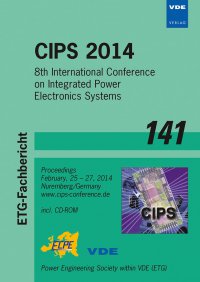Conducted EMI and Systems Integration
Konferenz: CIPS 2014 - 8th International Conference on Integrated Power Electronics Systems
25.02.2014 - 27.02.2014 in Nuremberg, Germany
Tagungsband: CIPS 2014
Seiten: 14Sprache: EnglischTyp: PDF
Persönliche VDE-Mitglieder erhalten auf diesen Artikel 10% Rabatt
Autoren:
Boroyevich, Dushan; Zhang, Xuning; Burgos, Rolando (Center for Power Electronics Systems (CPES), Virginia Tech, Blacksburg VA, USA)
Bishinoi, Hemant (ABB, Switzerland)
Mattavelli, Paolo (Department of Management and Engineering (DTG), University of Padova, Padova, Italy)
Wang, Fred (Center for Ultra-wide-area Resilient Electric Energy Transmission Networks (CURENT), University of Tennessee, Knoxville TN, USA)
Inhalt:
Over the past ten years, there has been increased use of electronic power processing in alternative, sustainable, and distributed energy sources, as well as energy storage systems, transportation systems, and the power grid. There is a trend of replacing traditional mechanical and hydraulic systems with the power electronic converter-based systems. The goals of using power electronics have been to reduce the size, weight, maintenance and operational costs of these power systems, while increasing overall energy efficiency, safety, and reliability. The emergence of the faster advanced semiconductor devices provides an opportunity for a higher switching frequency of the power converters, but aggravates electromagnetic interference (EMI) problems in the system. EMI filters are unavoidable parts of power electronics systems and make up a significant portion of their total volume and weight. This paper summarizes some of the authors’ recent research efforts towards improvements in system EMI noise reduction and EMI filter weight/size optimization in the context of increased research and development related to overall electromagnetic compatibility (EMC). Several approaches to system EMI modelling, EMI filter design and weight/size optimization and integration are presented along with EMI noise measurement results. EMI noise attenuation methods are discussed, and key issues in the filter design optimization process are illustrated with the EMI filter test results. Possible improvements in power density through compact filter design and filter integration are also presented. The review points to the extensive list of references where more details can be found.


